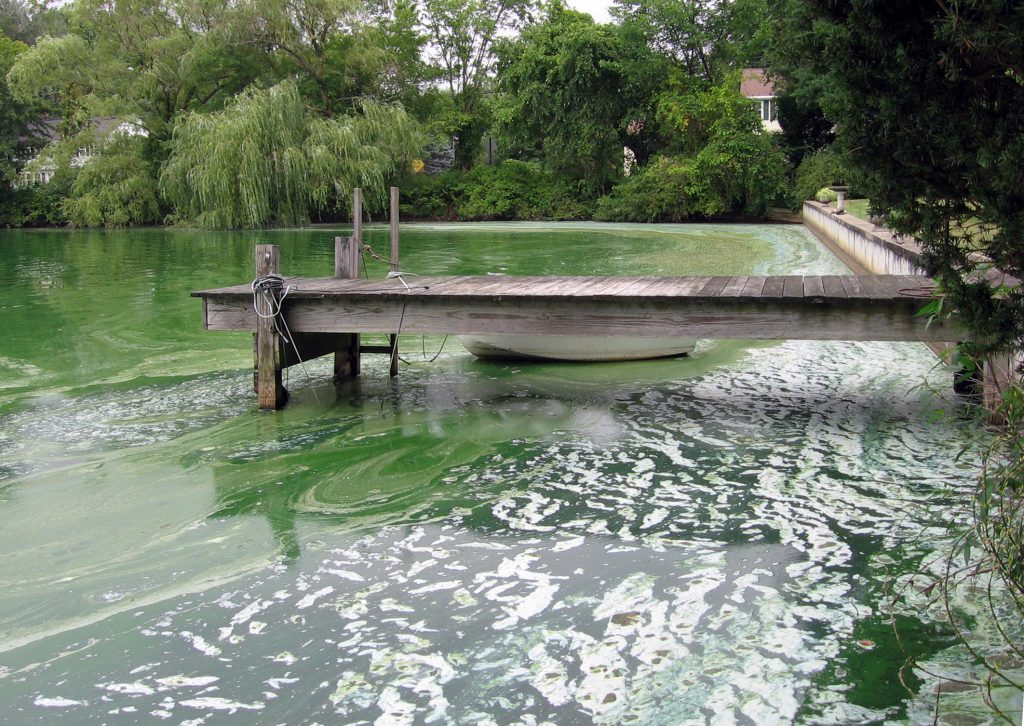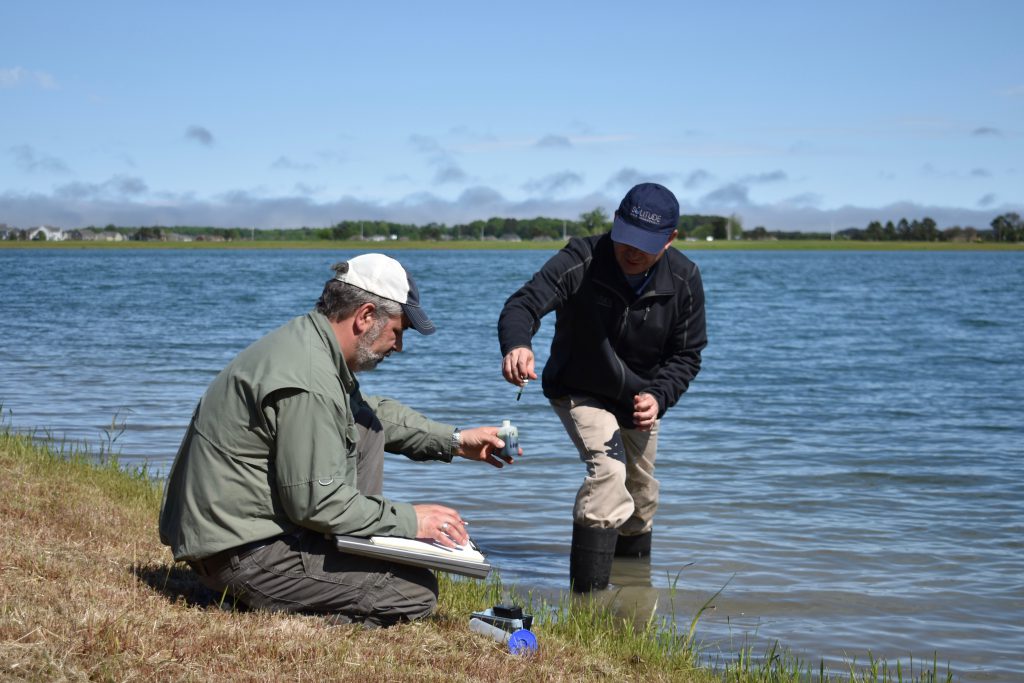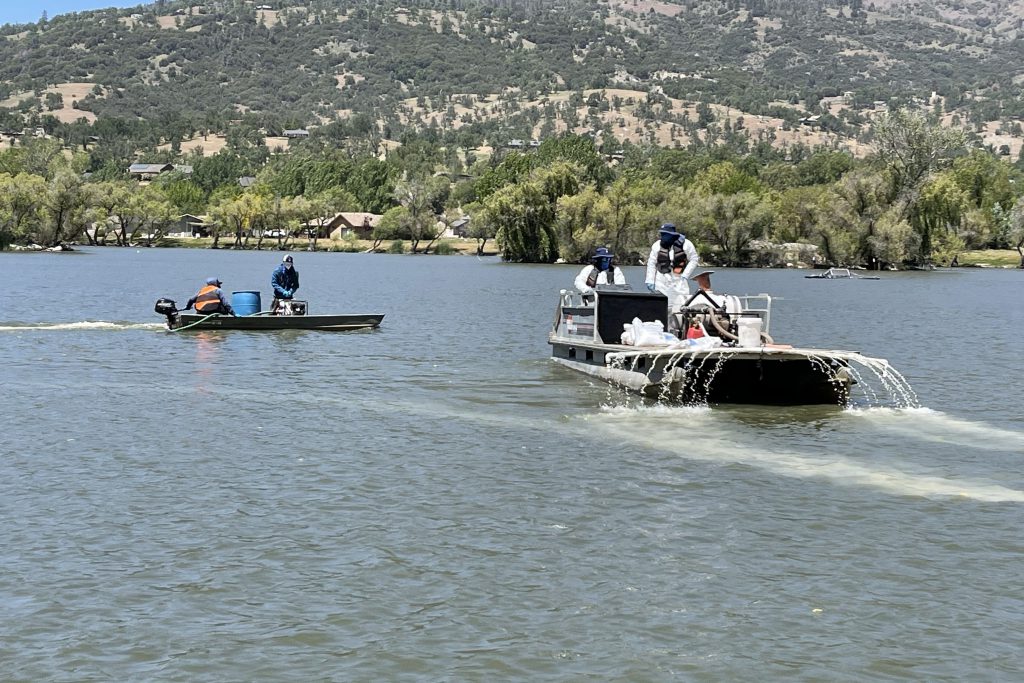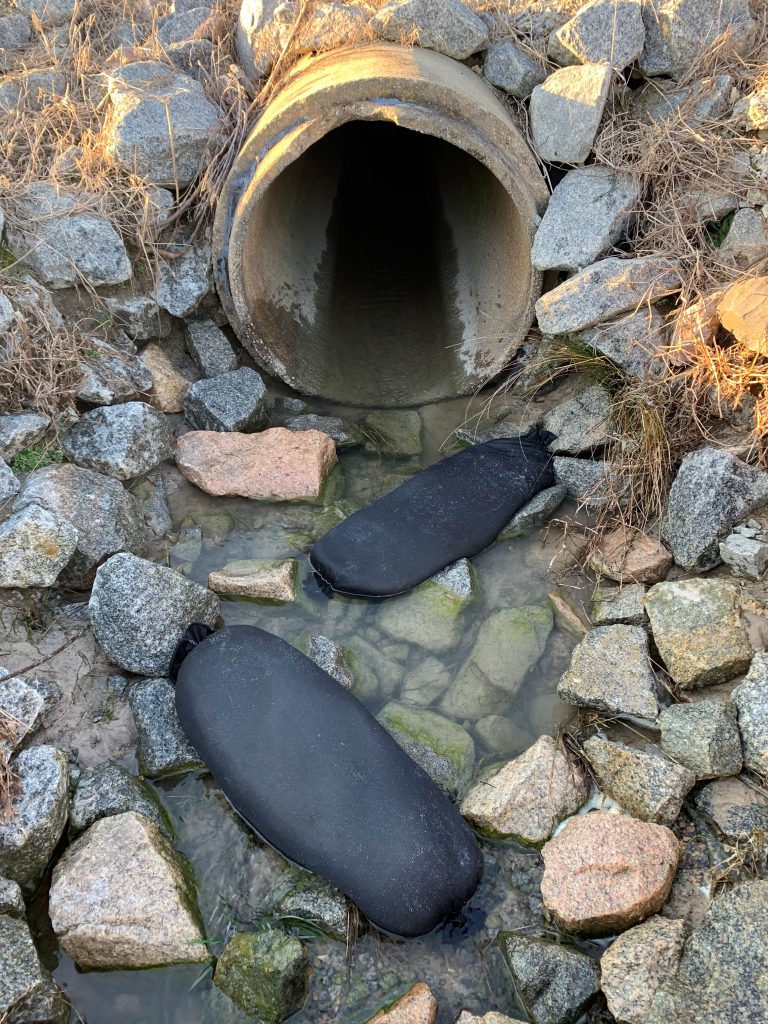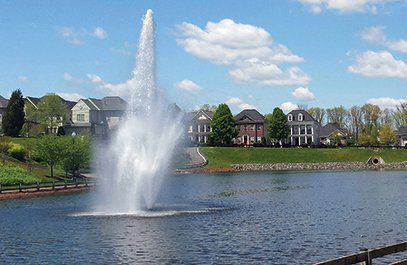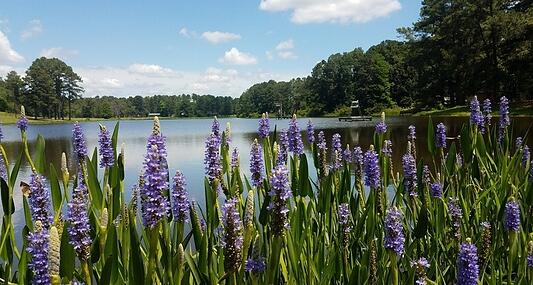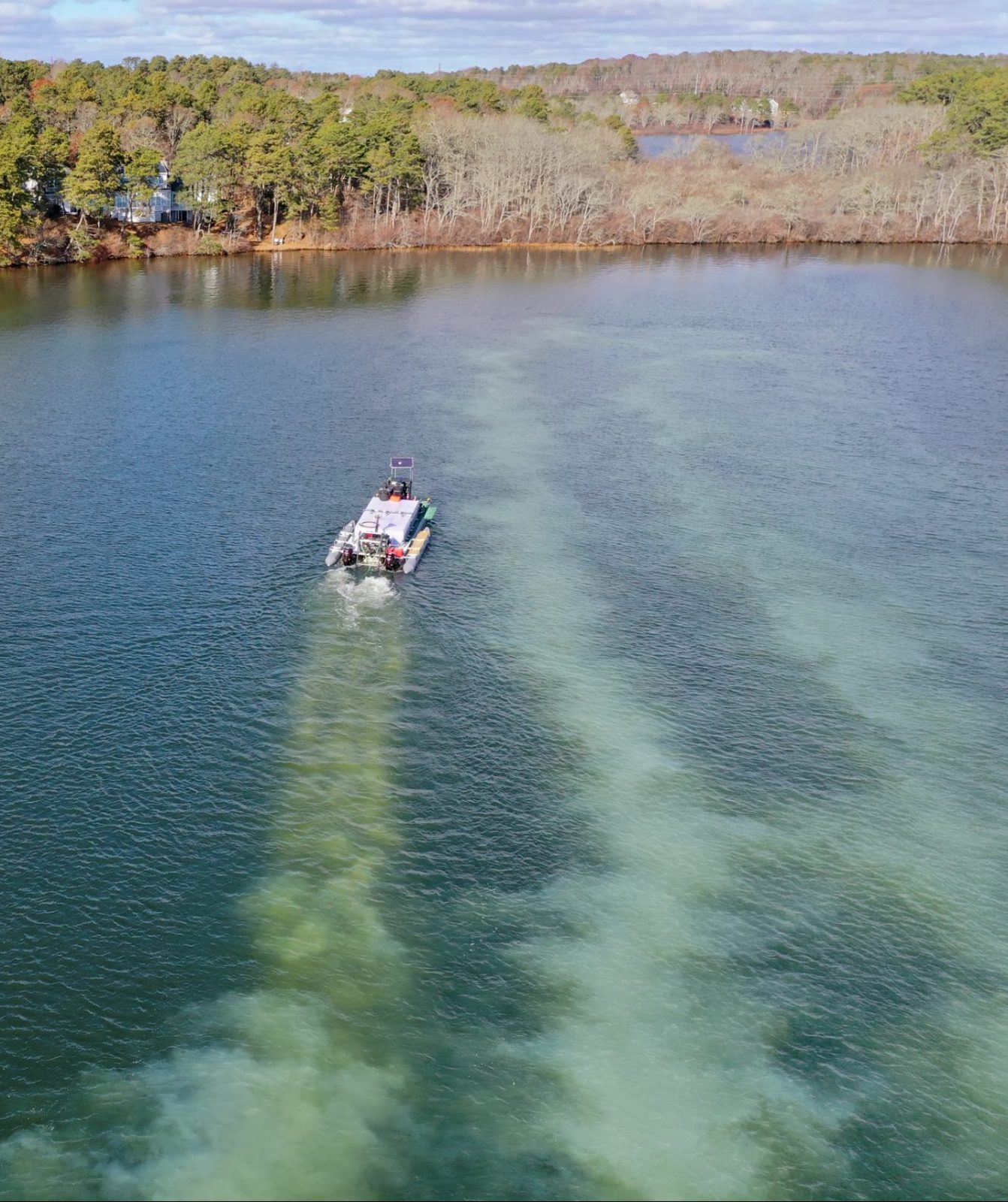
Nutrient Remediation: Improve Water Quality with Phoslock, Alum, EutroSORB, and Biologicals
Nutrients are one of the most critically important factors affecting a lake or pond’s health, appearance, and longevity. Nutrients allow all living plants and animals in an aquatic ecosystem to thrive and, when managed properly, can help homeowners associations, reservoirs, municipalities, golf courses, fisheries, and private landowners achieve their dreams for a water resource. But while aquatic life requires nutrients to survive, nutrients can also result in undesirable plant and algae growth if levels are excessive. To achieve your freshwater goals while preventing nuisance plant infestations, it’s important to understand how and why to keep nutrient levels in balance.
What Are The Consequences Of Nutrient Overload?
There are many types of nutrients, but the primary types considered in lake and pond management are phosphorus and nitrogen. These nutrients occur naturally in sediment and water and are also released by plants and animals when they die and decompose. Added nutrients are also present in fertilizer, pet droppings, and garbage. Most excess nutrients are brought to a waterbody through streams and stormwater runoff. As water travels across roadways, sidewalks, and other impervious surfaces during rainstorms, it picks up these organic materials, transporting them to our lakes, rivers, and stormwater ponds. Over time, chronic nutrient loading can cause poor water quality, bad odors, harmful algal blooms, volume loss, and other undesirable outcomes. Luckily, there are many ways to reverse and prevent problems caused by nutrient loading.
Natural And Sustainable Solutions To Combat Nutrient Overload:
While the application of an EPA-registered herbicide or algaecide is safe and can yield excellent results, it is a very short-lived fix for nuisance plant and algae problems. Binding or removing the nutrients that fuel undesirable growth is a much more effective and long-lasting strategy.
Water Quality Testing
The first step to develop any nutrient management plan is water quality testing. Professional analysis will help your lake manager understand the unique characteristics of your waterbody and design a safe and effective remediation plan that considers both your long-term and short-term goals. Once nutrient levels have been identified and other water quality parameters like dissolved oxygen levels, pH, and alkalinity, a customized management regimen can be implemented.
Inactive Excess Phosphorus with Phoslock
Lakes and ponds suffering from chronic nutrient loading may be excellent candidates for proven nutrient-locking technologies like Phoslock and Alum, which can help inactivate excess nutrients and improve water quality. When nutrient levels are more balanced, water quality issues like algae and aquatic weeds are less likely to develop.
Phoslock (lanthanum-modified clay) rapidly binds and permanently removes free reactive phosphorus (FRP) from the water column shortly after application, clearing up the pond and returning it to a naturally beautiful state. It is also effective at inactivating the phosphorus in the bottom sediments.
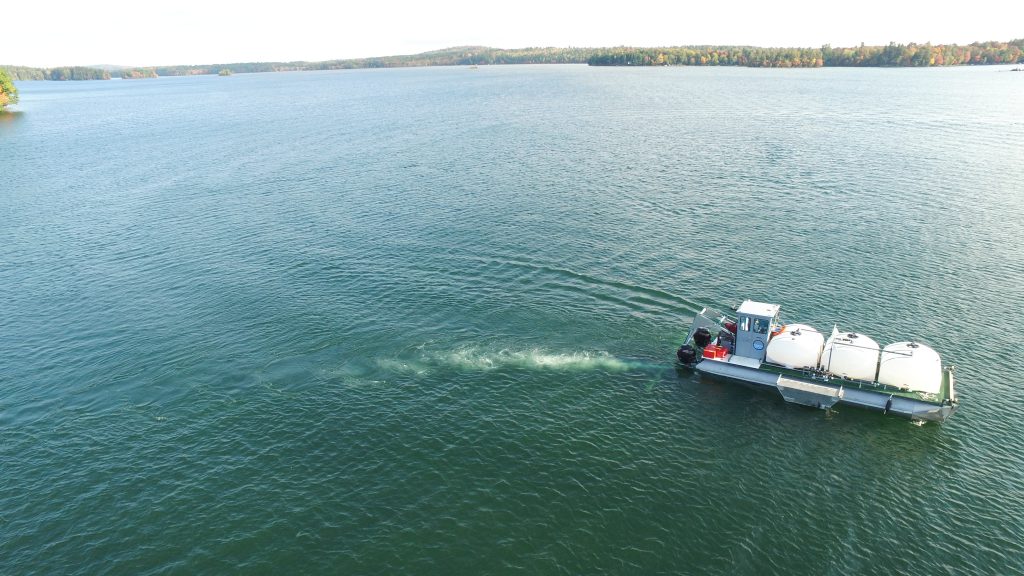
Control Nutrient Levels with Alum
For chronic nutrient loading or highly turbid water, Alum (aluminum sulfate) can also be an effective management tool. When introduced to the water, Alum forms a floc that binds with the excess nutrients in the water column. After a short time, this floc settles and forms a cover over the sediment and inactivates phosphorus and other excess nutrients to help improve water quality. Alum is an excellent option for large lakes, including drinking water reservoirs.
Control Nutrients with EutroSORB and Beneficial Bacteria
Depending on your goals and budget, other nutrient management solutions may be considered. EutroSORB is a new technology that is used to eliminate undesirable nutrients from the water. It comes in two forms which makes it an excellent tool for various types of waterbodies. Biological bacteria can be applied to your waterbody to literally metabolize excess nutrients as fuel. The process is sometimes referred to as ‘biological dredging’ because it can help restore depth to your lake or pond by breaking down nutrient-rich bottom muck.
Install Fountains And Aeration Systems
Remediating nutrients present in the water column is a great step towards rebalancing and restoring a waterbody to its original beauty, but it is not the last. It’s best to pair Phoslock and Alum applications with other sustainable strategies that reduce nutrients. Continual oxygenation of the water column is imperative in efforts to reduce nutrient loading. Fountains and submersed aeration systems work in different ways to circulate and oxygenate the water which helps balance nutrient levels and enhance water quality.
Establish a Beneficial Vegetative Buffer
Beneficial buffers can prevent new nutrients from entering the resource. Around the shoreline, consider introducing a vegetative buffer of native, flowering plants to reduce nutrient-rich stormwater runoff from flowing into your lake or pond during rainstorms. Communities can go the extra mile by properly disposing of trash and pet waste, reducing reliance on lawn and garden fertilizers, and bagging leaves and grass clippings.
Establishing Safe, Long-Lasting Aquatic Resources
Nutrients occur naturally and are necessary for the growth of all plant life, but the rise in urban development, land clearing, and mass agriculture is expediting this process. It’s up to each of us to reduce our negative impact and make decisions that help reverse nutrient loading in our surrounding environment. Only then can we establish safe, long-lasting, and healthy aquatic resources for our communities to enjoy for generations.
SOLitude Lake Management is a nationwide environmental firm committed to providing sustainable solutions that improve water quality, enhance beauty, preserve natural resources and reduce our environmental footprint. SOLitude’s team of aquatic resource management professionals specializes in the development and execution of customized lake, pond, wetland, and fisheries management programs that include water quality testing and restoration, nutrient remediation, algae, and aquatic weed control, installation and maintenance of fountains and aeration systems, bathymetry, shoreline erosion restoration, mechanical harvesting and hydro-raking, lake vegetation studies, biological assessments, habitat evaluations, and invasive species management. Services and educational resources are available to clients nationwide, including homeowners associations, multi-family and apartment communities, golf courses, commercial developments, ranches, private landowners, reservoirs, recreational and public lakes, municipalities, drinking water authorities, parks, and state and federal agencies. SOLitude Lake Management is a proud member of the Rentokil Steritech family of companies in North America.








